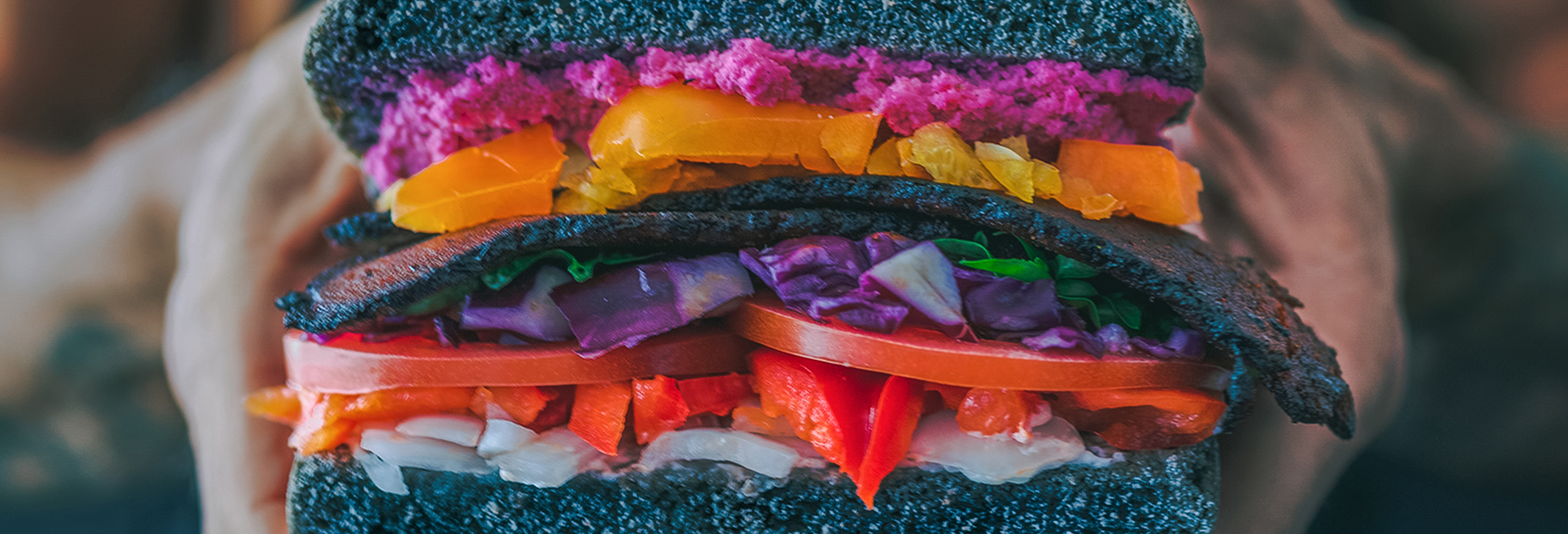Many consumers — from paleo locavores to self-taught homebrewers — view food as intrinsic to their identities. This growing collective of foodies is better informed and more selective than other consumer groups, and it’s challenging food businesses to work harder to grab (and keep) their attention.
A brand ethos that celebrates their convictions about how food is grown, harvested, distributed, prepared and sold is a tall order for restaurants — affecting how they source, prepare and market their offerings. It’s a challenge for foodservice suppliers, too. But it’s also an opportunity to position their businesses as expert partners who can help customers serve these trend-leading consumers’ complex expectations.
This food-as-identity phenomenon starts, as many market-disrupting phenomena do, with millennials and digital technology.
High-stakes foodie culture
No revelations here, but it must be stated: Millennials are a powerful (if not the most powerful) consumer demographic. Born between the early ’80s and mid ’90s, they became the largest generation in the United States in 2019, and they’re the largest in the country’s labor force. Generation Z is close behind and already highly educated on health and gastronomy. Just like their predecessors, food is how Gen Zers define themselves and self-actualize.
Since these consumers came of age as the web did, digital tools have always played a major role in their lives. Millennials and Gen Zers consistently take the lead on new tech adoption and don’t spare much time for brands they can’t connect with on their preferred channels.
Millennials are also food obsessed — and have been willing to pay for it. Across income brackets and household types, they eat or order out more often than other generations, and they spend more on dining. Attending food-focused events and exploring new cultures through food are also common pastimes.
From exclusive culinary experiences to paleo meal kits, millennials’ food demands are diverse — and go far beyond just eating something tasty and affordable. Much of this has to do with their relationship with technology, according to Eve Turow Paul, author of A Taste of Generation Yum: How the Millennial Generation’s Love for Organic Fare, Celebrity Chefs and Microbrews Will Make or Break the Future of Food.
Speaking at the National Restaurant Association’s Marketing Executives Group conference in 2018, Turow Paul argued the internet, mobile technology and social media aren’t just facilitating millennials’ obsessions with food. They’re also creating gaps in the ways consumers’ psychological needs are met — gaps that are being filled with (you guessed it) food. In turn, food culture is shaping their identities. With a thorough understanding of this dynamic, foodservice suppliers can effectively serve (and strengthen their relationships with) their customers.
Food gives consumers control
Americans are more stressed than ever before, according to the American Psychology Association. Across age groups, millennials and Gen Zers have the highest stress levels. Turow Paul pointed out a few potential reasons. Unlike previous generations, millennials grew up with a 24-hour global news cycle constantly spotlighting the woes of the world ,and entered the labor force at the peak of the recession. Most millennials have debt, and nonstop connectivity means they don’t stop working when they leave the office (though that’s the norm across all age groups). Turow Paul also pointed out growing distrust of government, corporations and the media among diverse consumer groups.
All of these factors hinder feelings of safety and control — which food can provide. In fact, people are more concerned than ever before about what’s in their food: 62% of consumers want to know everything that goes into the food they buy.
Millennial consumers in particular demand transparency into ingredients (are they GMO-free? Organic? Local?) and how their food is produced (was it ethically farmed?) and prepared (was it cold-pressed, cold-smoked or cold-brewed?). Turow also attributed the rise in restrictive eating behaviors to consumers’ need for control; the International Food Information Council recently found 43% of Americans follow a special diet (gluten-free, paleo, keto — there’s no shortage of examples here).
Foodies find community and purpose
Moving up Maslow’s pyramid, food satisfies peoples’ needs for love and belonging, too. Younger consumers are the most connected yet loneliest generation. While social media encourages one-upmanship and can fuel insecurities, digital lifestyles aren’t solely to blame. Research shows millennials are less likely to engage in the social centers of previous generations, such as small-town life or religious institutions.
By contrast, food can bring about the warm and fuzzy feelings we associate with love and belonging: Think comfort food, shared plates and treats that elicit nostalgia. And foodies of all ages get their social needs met in the communities created by dinner clubs, cooking classes and brunch culture.
Food also supports self-esteem and feelings of accomplishment — whether people are bragging about attending an exclusive tasting, posting pictures of an epic donut milkshake they waited hours to buy, DIYing kombucha or caring for sourdough starter like a family pet. Food even fuels activism, with more people choosing to spend their money on brands with ethical missions and specific food quality standards.
[pull quote] Food can bring about the warm and fuzzy feelings we associate with love and belonging: Think comfort food, shared plates and treats that elicit nostalgia.
What foodie culture means for foodservice content marketing
More than just a fad, food defines the most influential cohort of consumers today. So what does that mean for your content marketing?
1. Your customers need insights
The bar is already high for foodservice businesses, and foodie consumers’ demands will only continue to evolve. Restaurants need support, and many don’t have the resources internally to dive deeply into consumer data and track budding trends. Suppliers can be their guiding light, with educational, thought-leading content that demystifies consumers’ complex expectations and appetites. (Think “I only buy local, but feed me global flavors,” or “My Insta needs more unicorn-colored treats, but I won’t go near artificial ingredients.”)
Build an omnichannel strategy to effectively communicate the advice your customers need to create and market winning offerings. Break down overwhelming industry data with quick-hitting infographics, trendy diets with articles featuring subject matter experts and recipes with ingredients or flavors on the cusp of mainstream popularity.
2. Inspire them with storytelling
Transparency is king in good food marketing today (both for you and your customers) and content is your strongest weapon to convey it. Content is also how you’ll make the connection between your brand and consumers’ needs for belonging and self-actualization.
Tell the stories behind your products, supply chain and partnerships with farmers, and spotlight ways in which you’ve helped restaurants achieve their goals — whether they were sustainability and local sourcing or prestige and viral notoriety.
In addition, educate customers so they can, in turn, provide transparency to their customers and stir emotions through their menus, service and branding.
3. Organically tie in your products and solutions
Identify which of your products and services can help your customers position their businesses as ideal dining choices for consumers’ food identity needs, and communicate those solutions in your bottom-funnel content. Perhaps you sell the perfect cookie dough for battering and deep-frying that’ll get diners reminiscing about childhood visits to the state fair. Or maybe it’s riced cauliflower that helps guests stick to their strict keto diet.
Provide a seamless user journey to this promotional content from your top-funnel thought leadership with a strong internal linking strategy.
With an eye on consumers’ evolving relationship with food and a smart content marketing strategy, foodservice suppliers can ensure they’re serving up the insights and advice restaurants need — and establish their business as the go-to partner.




